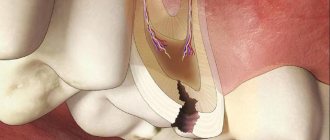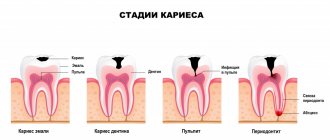Manifestations of headache and accompanying symptoms
We call any pain in the head area a headache, but the mechanism of its occurrence varies. It is caused by irritation of pain receptors in the dura mater, as well as blood vessels, nerves - trigeminal, glossopharyngeal, vagus, skin nerves, head muscles, cervical spinal roots. It can also manifest itself in different ways: it can be dull, pulsating, squeezing, bursting; can concentrate in the forehead, temples (on one or both sides), back of the head, crown of the head. Attacks can be strong, moderate or weak, and vary in duration and frequency. Pain may be accompanied by other symptoms (nausea, vomiting, visual disturbances, dizziness, increased or decreased blood pressure, etc.). All these characteristics are important for making a diagnosis.
Diagnostics
If you regularly experience discomfort in your temples and dizziness, you should definitely consult a doctor. If there are signs of vascular diseases, you should make an appointment with a cardiologist; in other cases, a consultation with a neurologist is indicated. If it is not possible to measure blood pressure or the nature of the symptoms does not allow you to independently figure out which specialist’s help is needed, it is better to initially consult a therapist. A general practitioner will help determine the cause of the problem and, if necessary, refer the patient to a specialist.
Initially, a survey of the patient is carried out, during which the characteristics of pain in the temples, the circumstances of its occurrence, the type of dizziness and the nature of other symptoms present are established. The doctor must examine the patient, measure blood pressure and, if necessary, perform neurological tests, which helps narrow the list of possible causes of poor health.
For accurate diagnosis of pathology and assessment of the severity of changes, the following may be prescribed:
- X-ray of the cervical spine;
- CT scan of the brain and skull;
- MRI of the brain and cervical spine;
- CT angiography;
- Ultrasound scanning of the vessels of the neck and head;
- 24-hour blood pressure monitoring;
- electroencephalography (EEG);
- UAC, OAM.
Causes of headaches
There are primary and secondary headaches. Primary pain is considered to be pain that is not an accompanying symptom, but is an independent disease. In this case, it is the headache that is the main problem. Secondary headache is one of the manifestations of a disease that is not limited to headache. Severe headaches can be accompanied by infectious diseases and poisoning of various natures (both toxic substances entering the body from the outside and those produced inside the body, for example, toxins that are formed as a result of the activity of viruses and pathogenic microbes in the body). A headache can occur as a result of stress, weather changes, hypothermia or overheating of the body, lack of sleep, hunger, overeating, lack of oxygen - the cause can be anything that leads to disruption of the metabolism necessary for brain activity.
So, if you have a headache, it does not necessarily mean that you are sick: it may simply be the result of a random factor. However, if the headache occurs periodically or persists for a long time, then most likely there is some kind of disease. In 95% of such cases, there is a primary headache, and only in 5% of cases is it secondary.
What is muscle spasm, its types and causes
Muscle spasms are involuntary contractions of muscle tissue.
Unlike natural contractions (for example, during the digestion of food, during exercise, swallowing water), spasms occur without any external or internal cause, in the absence of a person’s desire, and unpredictably. As a rule, muscle spasms in the head area affect the temples, forehead, and back of the head. Involuntary contractions of the masticatory muscles can occur due to the use of stimulants (caffeine, taurine, narcotics) or for internal physiological reasons. In the second case we are talking about:
- trismus - a spasm that provokes a tight clenching of the jaws;
- bruxism - involuntary muscle contractions that occur mainly during sleep, at night, and are accompanied by grinding of the upper and lower rows of teeth.
Muscle spasms in the cervical spine can be either unilateral or bilateral. They are often associated with pinched nerves or spinal pathologies (for example, a hernia).
Advantages
Smart medicine for smart people
Safe, effective and natural rejuvenation
The best technologies for communicating with patients
We don't just take care of your beauty - we recharge you!
Types of head muscle spasms:
- episodic involuntary muscle contractions: headache, neck muscle pain lasts no more than 14 days over a period of 1 month;
- chronic spasms: 15 days a month or more.
Typically, the causes of spasms in the muscles of the head, jaws, and neck are:
- metabolic disease;
- lack of physical activity;
- diseases of the musculoskeletal system;
- vascular pathologies;
- deficiency of vitamins, microelements;
- stress: physiological, psychological, emotional stress;
- hypothermia;
- increased body temperature;
- obesity;
- genetic predisposition;
- injuries;
- pinching of nerve fibers.
Primary headache. Major diseases.
The most common forms of primary headache are “tension pain” and migraine, more rarely – cluster headache and other forms.
Tension headache (TTH)
can occur in anyone. This is the most common form of headache and is often characterized as a “normal” or “regular” headache. Attacks can last from 30 minutes to several days. The frequency of attacks varies from person to person, and it can also vary from one person to another during different periods of his life. The pain is described as squeezing, squeezing the head like a hoop or tight hat, usually bilateral, and moderate. In some people it can become chronic (chronic pain is diagnosed if there are more days with a headache than without it). A person experiencing chronic headaches becomes irritable. Weakness, fatigue, decreased appetite, and sleep disturbances may occur. The cause of TTH is physical tension in the muscles and ligaments of the head and neck - the so-called “muscle stress”, which can be a consequence, for example, of working in an uncomfortable position. TTH often occurs in those who work at a computer or whose work involves the need to look at details (jewelers, watchmakers, assemblers of electronic equipment, masters of artistic embroidery, etc.). The emotional factor is also important: emotional tension caused by stress or a state of increased anxiety can also lead to pain.
Migraine
characterized by severe and painful attacks of headache, which are often accompanied by nausea (and in some cases vomiting), as well as intolerance to light and sound. The perception of smells changes, thermal sensations are disrupted. Migraine attacks last from 4 hours to 3 days and can be repeated with a frequency of 1-2 times a year to several times a month. During an attack, so-called “precursors” may be observed - irritability, depression, fatigue, occurring several hours or even days before the onset of pain. In a third of cases, pain is preceded by phenomena called “auras”: 10-30 minutes before the attack there may be visual disturbances (blind spots, flashes, zigzag lines in front of the eyes), tingling and numbness starting from the fingertips and spreading up the body and etc.
Predisposition to migraine is congenital and is associated with disorders in the brain structures responsible for pain and other sensations. Every seventh adult suffers from migraines, with women three times more likely than men. In girls, migraines usually begin during puberty.
Factors that contribute to the development of migraine attacks: chronic fatigue, anxiety or stress, in women - menstruation, pregnancy and menopause.
But a predisposition to seizures does not mean that an attack will definitely happen. There are factors that act as a “trigger” for an attack. An attack can be triggered by: skipping meals, insufficient fluid intake, certain foods, sleep disturbances, physical activity, changes in weather, sudden changes in emotions.
Cluster (or beam) headache
characterized by one-sided sharp (“dagger” or “drilling”) pain. The intensity of the pain rapidly increases within 5-10 minutes, and the attack itself lasts from 15 minutes to 3 hours, during which the patient cannot find a place to rest. The pain is usually localized in the eye area, and the eye may become red and watery. Recurrent attacks form a cluster (that is, they follow each other), the duration of the cluster is from 6 to 12 weeks. This form of pain occurs five times more often in men than in women. However, those who smoke a lot or have smoked in the past are more susceptible to it.
Causes of headaches in the temples and dizziness
Such symptoms can be present both in healthy people and as a consequence of the development of various diseases. In the first case, pressing sensations in the temples and dizziness may be a consequence of the influence of external factors:
- alcohol intoxication;
- overfatigue, especially during high physical or mental stress in combination with disturbances in sleep and rest patterns;
- unbalanced nutrition and fasting;
- regular stress and nervous exhaustion;
- climate and time zone changes.
In such cases, there is usually no direct danger to human health, and to eliminate discomfort it is enough to eliminate the causative factor, i.e., reconsider your diet, schedule and working conditions, etc.
It is not uncommon to feel dizzy and have pain in the temples when staying in a stuffy room for a long time. These symptoms disappear after exposure to fresh air.
But also discomfort and pain in the temples with dizziness of varying intensity may indicate the development of pathological changes in the body, which, if left untreated, will progress and provoke a deterioration in the general condition and aggravation of symptoms. There are practically no pain receptors in the bone structures of the skull and brain tissue, and therefore they simply cannot hurt. The main sources of discomfort are blood vessels, meninges and cranial nerves. Therefore, if you regularly feel pressure in your temples and feel dizzy, you should find time and consult a doctor, because this may indicate:
- arterial hypertension;
- migraine;
- traumatic brain injury (TBI), including previously received;
- vertebrobasilar insufficiency.
Sometimes a feeling of pressure and bloating in the temples appears after eating foods containing sodium nitrite. These are usually a variety of sausages or Chinese dishes. For such cases, they even selected the appropriate terms: “sausage” headache and Chinese restaurant headache. They are a consequence of the body’s increased reaction to sodium nitrate, which leads to changes in the tone of blood vessels and, accordingly, fluctuations in blood pressure.
Arterial hypertension
High blood pressure is one of the most common causes of headaches in the temples and attacks of dizziness. This is often combined with pain in the back of the head, nausea, vomiting, deterioration in coordination of movements, redness of the face, as well as visual disturbances in the form of flickering spots before the eyes, etc.
The disease develops against the background of weakness of blood vessels, a decrease in the strength and elasticity of their walls, narrowing of the lumen as a result of the development of atherosclerosis, the development of kidney diseases, including pyelonephritis, glomerulonephritis, polycystic disease, etc. An increase in blood pressure can be established at home using mechanical, semi-automatic or automatic tonometer.
Normal blood pressure values are considered: systolic (upper) 110–130 mm Hg. Art. and diastolic (lower) 70-80 mm Hg. Art. High blood pressure is indicated by readings of more than 130/80, and arterial hypertension by more than 140/90.
Factors that provoke an increase in blood pressure are stressful situations, excessive tension and heavy physical activity. Often, in people suffering from arterial hypertension, attacks are caused by changes in weather conditions.
Arterial hypertension, even moderate, cannot be ignored. A periodic increase in blood pressure, especially to high values, should be contacted by a cardiologist, since in such cases the risk of stroke increases sharply. Weakened blood vessel walls may not withstand high blood pressure and rupture, which can lead to bleeding in the brain, i.e. hemorrhagic stroke.
Migraine
Migraine is a very common problem today. It is characterized by pain not only in the temples, but also in the area of the eye, forehead, or covering one half of the head completely. In this case, migraine is always paroxysmal in nature and most often one-sided, although with each attack the side of the pain localization can change, as well as cover both halves of the head at the same time.
The hallmark of a migraine is a throbbing, bursting pain, the intensity of which often increases gradually over several hours. It can occur at any time of the day, although more often the attack begins in the morning. This may be accompanied by:
- dizziness;
- visual disturbances;
- increased photosensitivity;
- nausea and vomiting.
With migraines, increased pain is provoked by any body movements, but especially by the head and climbing stairs. Many patients with this diagnosis complain of deterioration in health when hearing loud noises, so during an attack, most of them try to stay alone in bed in a quiet, darkened room.
In some patients, an attack is preceded by an aura, that is, certain, strictly individual precursors appear. Some patients notice that they feel dizzy a few hours before the headache occurs, others talk about loss of visual fields, others pay attention to speech impairments or a combination of similar symptoms.
A migraine attack can be triggered by various external and internal factors, in particular:
- changes in weather conditions;
- diet disorders and alcohol consumption;
- stressful situation;
- lack of sleep;
- taking certain medications, etc.
In this case, attacks can last for several hours or several days. This, combined with a high intensity of pain and the inability to perform one’s household and professional duties, significantly reduces a person’s quality of life. Therefore, if symptoms characteristic of migraines appear, it is worth contacting a neurologist and accurately describing how the attack begins, assessing the severity of pressure in the temples, the characteristics and nature of dizziness (are the surrounding objects spinning or is there a sensation of one’s own body rotating in space, is there an unsteadiness in gait or faintness). condition, etc.).
TBI
You may feel dizzy and have pain in your temples even after receiving a traumatic brain injury, and these symptoms can occur even some time after the action of the traumatic factor. Moreover, they can even be called typical for the recovery period.
TBI most often results from hitting the head on a hard surface. This is not always accompanied by a fracture of the skull bones, although it does not exclude it. In the acute period, i.e. immediately after injury, confusion, drowsiness, headache, vomiting, and nausea may be observed. In such cases, it is necessary to immediately go to an emergency department equipped with an MRI scanner, since severe impacts to the head can provoke the formation of intracranial hematomas, rupture of blood vessels and other serious complications that can be fatal. Subsequently, all patients will need to follow bed rest and other doctor’s recommendations.
Vertebro-basilar insufficiency
Vertebro-basilar insufficiency is a condition in which a disruption of the blood supply to the brain occurs due to a decrease in the lumen, compression of the arteries supplying it: 2 vertebral and/or basilar. A decrease in the volume of blood supplied to brain cells leads to their oxygen starvation. But it is the brain that is the most sensitive organ to hypoxia, and its long-term preservation can have extremely undesirable and dangerous consequences.
Impaired blood supply to the brain provokes a deterioration in its functioning, which is accompanied by:
- headache, often in the temple area;
- dizziness;
- general weakness and decreased performance;
- nausea;
- hearing loss and tinnitus;
- visual impairment, including the flickering of spots before the eyes.
Patients often notice a deterioration in cognitive abilities: concentration, memory.
Vertebro-basilar insufficiency is not a separate disease, but becomes a consequence of the development of pathologies of the blood vessels or the cervical spine. It is often provoked by atherosclerosis, if plaques form in the walls of the blood vessels of the vertebrobasilar region, as well as inflammatory processes in them.
No less often, cerebrovascular accidents and associated headaches and dizziness are caused by pathologies of the cervical spine. These include osteochondrosis, spondylosis, protrusions and herniated intervertebral discs. Their development is based on degenerative-dystrophic changes in the intervertebral discs, as a result of which they become deformed. This is initially accompanied by a crunch in the neck when moving and aching pain as a result of exacerbation of inflammation. Gradually, pathological changes progress, disc tissues lose elasticity, which creates the preconditions for the formation of protrusions, and then intervertebral hernias. In parallel with this, changes can occur in the vertebral bodies themselves with the formation of osteochondral growths on their surface - osteophytes.
The convergence of the vertebrae against the background of osteochondrosis, protrusions, which are protrusions and hernias, as well as osteophytes can mechanically compress and irritate the walls of the vertebral arteries. This leads to a decrease in their lumen and the development of vertebrobasilar insufficiency with pain in the temples and dizziness.
Secondary headache and diseases in which it occurs
In general, primary headache, although it disrupts the normal course of life during attacks, does not have serious consequences for a person’s general health. And secondary pain, despite the fact that it occurs much less frequently (in 5% of cases), can be a consequence of a dangerous disease.
Headache is necessarily present among the symptoms of the following diseases:
- vegetative-vascular dystonia (headaches can be combined with dizziness, nausea, fluctuations in blood pressure);
- hypertension (pain is mainly localized in the occipital region, there may be dizziness, noise in the head, spots before the eyes, heat in the head, pain in the heart);
- stroke;
- traumatic brain injury;
- meningitis;
- encephalitis;
- eye diseases (for example, glaucoma);
- diseases of the ear and nasopharynx (otitis media, sinusitis);
- neuralgia;
- diabetes;
- renal failure;
- oncological diseases.
When should you see a doctor for a headache?
Many people prefer to simply take popular painkillers and not see a doctor. However, self-medication can lead to excessive use of such drugs, which can cause gastritis, peptic ulcers, as well as chronic headaches caused by taking medications. In addition, without undergoing a medical examination, you may miss the development of a dangerous disease. And a momentary effect obtained with the help of a random drug will still not be a solution to your problem.
You should definitely consult a doctor:
- if pain occurs for the first time in life (especially important for people over 50 years old);
- with very severe headaches;
- if the pain continues for a significant time (more than a week);
- if the pain intensity increases over time;
- when a headache occurs or worsens after a change in position or sudden movement of the head;
- if there are cases of loss of consciousness, memory impairment, changes in personal qualities;
- if the pain does not go away after taking antipyretic and painkillers.
Which doctor should you see if you have a headache?
If you complain of a headache, you should first contact your physician. To make it easier for the doctor to understand your disease, it is advisable to prepare answers to the following questions before visiting the doctor:
- How long has the pain been present?
- How often do the attacks recur?
- How long do they last?
- How severe is your pain (mild, moderate, severe, intolerable)?
- What is its character (pressing, bursting, pulsating)?
- In what part of the head is the pain concentrated?
- Are there any accompanying symptoms and what are they?
- At what point does pain occur (what contributes to its occurrence)?
- Do you manage to relieve pain (prevent attacks) and how do you do it?
- Do your relatives have similar complaints?










